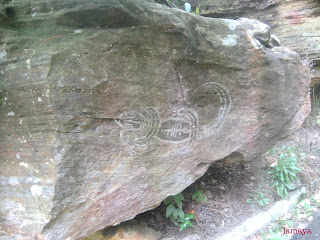Pollo en Nogada
FOR WALNUT SAUCE:
18 fresh walnuts in their shells
1/2 cup milk
1/2 slice firm white bread, crust removed
1/2 tablespoon sugar
1/2 teaspoon dry sherry
1/4 cup heavy cream
FOR FILLING
3 tablespoons oil
1/2 small white onion, diced
1 garlic clove, peeled and finely chopped
1 poblano chile, roasted and peeled
1 tablespoons currants
1 tablespoon dried mango
1/2 small pear, peeled, cored and diced
1/2 small apple, peeled, cored and diced
1 small tomato, seeded and chopped
1/4 teaspoon fresh thyme
1/4 teaspoon ground cinnamon
1/8 cup chicken broth
salt
3 tablespoons silvered blanched almonds
1/2 cup neufchatel cheese
FOR ROULADE:
4 boneless chicken breasts
3/4 cup flour
3/4 cup panko bread crumbs
1 egg, beaten
2 tablespoons water
2 tablespoon oil
FOR GARNISH:
pomegranate seeds
parsley
WALNUT SAUCE:
Crack open the nuts and remove the meats in the largest pieces possible. Drop the walnut pieces (about 6 at a time) into a small pan of boiling water and immediately remove with a slotted spoon to a paper towel. Peel the thin brow skin that covers each piece (if the nuts are nut fresh this will be a very difficult task). Place the peeled walnuts into a blender jar with milk, bread, sugar, salt, and sherry. Blend until the puree is silky smooth (check by rubbing a drop between your fingers.) If the mixture is too thick to blend you can add a little bit more milk, but just enough to get the blades moving. Finally add the cream and blend for a few seconds. If sauce is too thick you can thin it with milk. Taste for salt and sugar: the sauce should have a slightly sweet edge with just enough salt to bring out the flavor of the walnuts.
ROAST CHILE:
Lay chile on a baking sheet set about 4 inches below a preheated broiler. Roast turning occasionally until soft, blistered and blackened. Remove chiles from oven and place in plastic bag with 1 tablespoon water. Let sit for 10 minutes. Peel the charred skin off the chiles and rinse. Remove seeds and veins and dice.
For the Filling:
Heat 1 1/2 tablespoon oil in 12 inch skillet over medium-high heat until shimmering. Add onion a cook, stirring frequently, until soft. Add the garlic and poblano and cook until fragrant. Stir in the currants, dried mango, pear, apple tomato, thyme and cinnamon. Add 1/8 cup broth, mix well, reduce heat and simmer until the apples and pears are tender (but not mushy). Season with salt. Remove from heat and cool.
While mixture is simmering, heat the remaining 1 1/2 teaspoons oil in a small skillet over medium heat. Add the almonds and fry, stirring constantly, until they are a deep golden color. Remove from oil, drain and cool on paper towel.
When cooked mixture and almonds are cool stir into the 1/2 cup neufchatel. Mix well.
FOR THE CHICKEN:
Use a sharp knife to cut east breast horizontally, stopping 1/2 inch away from the edge so that the halves remain attached. Open up the breasts to create 4 cutlets. Place 1 cutlet at a time between plastic and pound to 1/4-inch thickness. Trim cutlets to form rectangles that measure about 8 by 5 inches.
TO ASSEMBLE AND COOK:
Preheat oven to 325° F (160° C)
With the thinnest end of the cutlets pointing away from you, spread 1/4 of the cheese filling evenly over each cutlet, leaving a 3/4-inch border along the short sides and 1/4-inch border along the long sides. Roll each breast up as tightly as possible without squeezing out filling. Use two pieces of twine to tie the bundles together. Pat each chicken roll dry.
Place flour, beaten egg and water, and panko bread crumbs in three shallow dishes. Season the bundles with salt and pepper. Coat each chicken bundle with flour. Then dip in the egg wash and finally roll in the bread crumb mixture.
Heat 1 tablespoon oil in a skillet over medium-high heat until just smoking. Add, the chicken bundles and cook until golden brown on all 4 sides, about 2 minutes per side. Transfer rolls to oven proof dish. Bake for 20-30 minutes, until fully cooked.
TO SERVE:
Spread a thin layer or walnut sauce on plate. Place chicken bundles on top and garnish with pomegranate seeds and parsley.



























